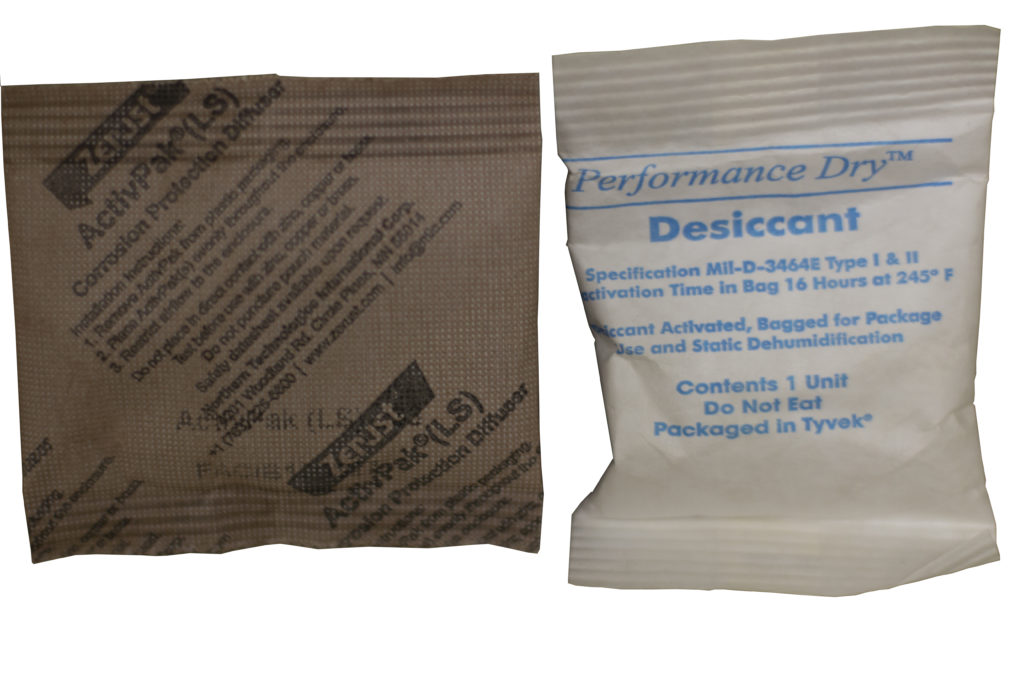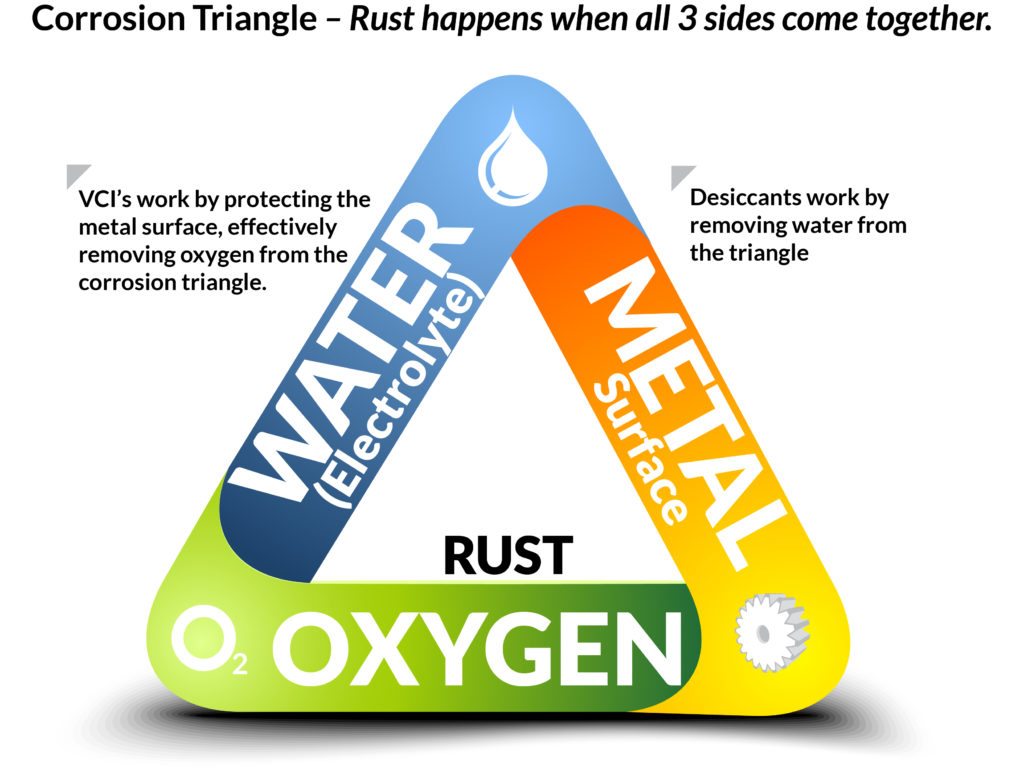People often confuse VCI (Vapor or Volatile Corrosion Inhibitor) with desiccants, as they are used to control corrosion during shipping and storage. However, the way these chemistries work is much different. Depending on the application, environment, and length of protection, you may get better results with VCI vs. desiccants. Some highly effective packaging systems use both chemistries. So, lets clear up some confusion around these two valuable products.
Desiccants
Desiccants’ function is to draw and retain moisture from the environment and prevent it from reacting with the metal surface. While various desiccant products have different absorption rates, capacities, effective operating temperatures, and other considerations, they all work by absorbing the moisture in the airspace. As new moisture passes into the area to be protected, the desiccant will eventually become saturated and no longer reduce the corrosion rate. After the desiccant has reached its capacity to absorb liquid, it is important that the desiccant must be removed and replaced. A fully saturated desiccant will begin to release moisture back into the air space and can increase the corrosion rate of the metal it’s intended to protect.
Advantages
- Desiccant products are inexpensive.
- Desiccant products are clean, dry, and environmentally safe.
- Desiccant products are easy to use and save labor costs.
- Desiccant products present virtually no health concerns.

VCI- Volatile/Vapor Corrosion Inhibitors
VCIs are substances that slowly release a corrosion preventative compound capable of protecting metal surfaces. VCIs are often used in situations where it is impractical or undesired to use rust preventative liquids or other surface treatments.
The compounds that VCIs release into an airspace actively prevent corrosion by forming strong bonds with a metal surface. This promotes and maintains the natural and healthy passive oxide layer on the metal surface. In addition, the VCI layer that forms is invisible, dry, and does not affect the physical properties or functionality of the metal in any way. Therefore, the protected metal can be painted, treated, and/or used straight out of the package without further cleaning.
VCIs are formulated to protect ferrous metals such as iron, cast iron, carbon steel, chrome, etc. In addition, many specialty VCI products are also available to protect non-ferrous metals such as copper, brass, and bronze from corrosion and tarnish. VCIs are delivered in poly packaging, kraft paper, emitters, and powders.
Advantages
- VCI products provide robust corrosion protection
- VCI products are clean and dry. Parts are ready to use right out of the packaging.
- VCI products are easy to use and save labor costs.
- VCI products last many years
- VCI products can be custom-printed with your company logo or other information.
- VCI products are less costly than most other corrosion products.
- VCI products are safer than oils and greases.

The good news is both products can be used in packaging programs to leverage the benefits of each type. For example, a package could be lined with a VCI gusset bag, and a desiccant can be added to stabilize them in shipping. Whichever option you choose, ZERUST® can help you with your corrosion prevention needs. We analyze the current state of your corrosion management needs and work with you and your team to implement the best and most cost-effective solution. ZERUST® Technical Support team members can come to your facility and do a step-by-step analysis of your current process, including fluid audits, VCI and packaging process audits, and data logger analysis. Our mission is to provide you with the right products, processes, and procedures to ensure that you can achieve your desired results.
